The Early Scribes Of Videogame Books
Isn't it wonderful to live in an age where, if you wanted to learn anything about videogames,
you can just get onto the Internet and surf around until you find pages and pages of information on the subject through various websites?
Whether you're looking up how videogames got started, or need to find how to defeat certain enemies in whatever game you're playing, or whatever
it is you're looking for, there's just no shortage of people putting up websites to answer your gaming dilemmas. Back in the early days
of gaming, however, the only way to find out how to play the latest videogame like a pro was to watch players take their turns at your local arcade
or your friend's house, and very few people really knew there were such things like Pong and its predecessor Computer Space that existed.
To fill that void of information, though, some talented writers took it upon themselves to get to know their subject very well to bring it forth to
the masses through the pre-Internet miracle of the printing press.

If there was one name that really stood out as far as writing books about videogames, that name
would be Ken Uston. A former Wall Street stock broker who became a professional blackjack player, who turned his gambling know-how
into a best-selling book, Ken was introduced to Pac-Man by a friend of his. From the hours that he spent on the machine, Ken gleaned
enough information to put it into his first videogaming book, Mastering Pac-Man. Very detailed from front to back, it covered all
the aspects of the game, how Pac-Man and the monsters behaved, how long the monsters stayed blue on each screen, how the monsters moved around from
screen to screen, the patterns you could employ to complete every screen, the places in the maze where you could literally put Pac-Man in park without
the monsters bothering you, and even variations of the original arcade game. For fun, Ken also throws in some excuses you could give somebody
in case you mess up on a game. Following Mastering Pac-Man, he also wrote three other books about videogames -- one covering 15 other
popular arcade games of that time period, and two that covered the popular home game units and their cartridge titles.
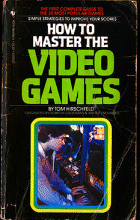
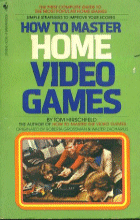
|
Tom Hirschfeld, probably lesser known than Ken Uston, nonetheless gave this subject a go with his two books,
How To Master The Video Games and How To Master The Home Video Games. Both books follow the same detailed outline, presenting each game covered
within its games with an illustrated screenshot, a controls layout, scoring, dangers, observations of what goes on in the game, and strategies for playing.
While Tom's presentation lacks humor, it does however a very good job with the material at hand. Another writer, Craig Kubey, teamed up with his brother Ken
and talked with various insiders of the industry like Alan MacNeil (the programmer of Berzerk), Ed Logg (the programmer of Asteroids), Dave Theurer (the programmer
of Missile Command and Tempest), and Dana Bailey (the co-programmer of Centipede), to develop The Winner's Book Of Videogames, which covers not
only the games that were at the present time the greatest but also the game machines of the pre-Space Invaders era, like Night Driver, Sea Wolf, and Space War.
Also in the same book is a section devoted to the Atari VCS (2600), the Intellivision, and the Odyssey 2, covering a selection of games that showed the strengths and weaknesses
of all three systems. Craig and company obviously had fun writing this book, since throughout the whole thing they present fun quizzes with rather funny answers,
a faux awards show where they nominate the winners of various categories of games, and even suggest lobbying to your congressman about the issue of videogames for the poor.
It's too bad Craig didn't write anymore than this one book!
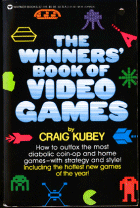
In the meantime, magazines covering videogames started appearing on newsstands. Among them was probably the best of the bunch,
Electronic Games, which started publication in late 1981 and ended it in the middle of 1985, when its coverage was totally on personal computer system games. With staff
writers like Arnie Katz, Bill Kunkel, Joyce Worley, and Tracie Foreman Hines, Electronic Games kept readers informed of the latest goings-on in the gaming industry,
reviewed the latest game machines and cartridges and computer programs, answered questions that were on the minds of inquisitive gamers, and even for a time wrote fanfiction
based on various popular games. This indelible mark they left on videogaming made the passing away of this magazine (which in its last issues was called Computer Entertainment)
and its subsequent absence painful to bear until the late 1980s, when the first issue of Videogames & Computer Entertainment made its debut, covering the era of the Nintendo
and Sega game consoles. Videogame books also dried up until that time as well, and then came Jeff Rovin, whose presentation and reviewing of games in his series of books, the first
being How To Win At Nintendo Games, made old-timers miss dearly the talents of Ken Uston and Tom Hirschfeld while welcoming another scribe to the list of great game reporters.
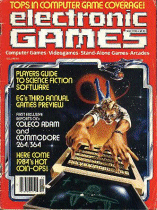
From there, however, game books and magazines became more and more common, becoming more and more detailed in presenting what the latest
videogame machine, program, or piece of hardware had to offer, but they were also becoming more and more the work of corporate writing than individual talent. As far as finding the latter,
however, that would come with the release of books that covered the history of games, game companies, and the hobby in general, as evidenced with Phoenix: The Rise and Fall of Videogames
by Leonard Hermann, High Score! The Illustrated History of Electronic Games by Rusel DeMaria and Johnny L. Wilson, and Arcade Fever: The Fan's Guide to the Golden Age of Video Games
by John Sellers. Fortunately, even before the popularity of the Internet, there came fan-based publications like the 2600 Connection that allowed those with access to a computer and a low-cost
printing service to share their personal views with other fans of modern and antiquated gaming machines -- a much-needed sedative approach to the rather loud and somewhat vacuous material that passes
for videogaming journalism in today's mainstream periodicals.
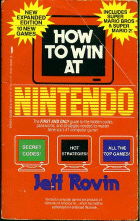
Then, of course, there are fictional books that are based on the videogames themselves, however few there may be. The four-part Doom series,
which I haven't fully read through, having only collected three of them, featured a more fleshed-out story that went beyond the rather bland kill-anything-that-moves mentality and atmosphere of the game
series itself, with its central characters being two Marines who have gone through the hell of surviving the masochism that took place on the outposts of Mars' twin moons only to find that these mechano-demonic
forces have found their way to Earth and are waging war with its citizens. Star Wars: Shadows Of The Empire, a Nintendo 64 game whose story took place between the happenings of The Empire Strikes Back
and Return Of The Jedi, was simultaneously released with an adult and young readers' novelized versions that became part of the New York Times best sellers list of 1996. Nintendo itself teamed up with a group
called Pathways To Adventure, a division of Sybex, for the release of a novelized version of its popular Legend Of Zelda: Ocarina Of Time game two years later. And even way before these books came out, Atari
with Warner Communication's other acquisition DC Comics worked on a series of pack-in comic books for their Atari 2600 cartridges -- the Atari Force series that would beget a second series of its kind that
appeared right alongside its popular Superman and Batman titles, as well as the short-lived Swordquest series. A Star Raiders-inspired graphic novel (which fit in with the third issue
of the pack-in Atari Force series comics as a spinoff tale) also emerged back then.








